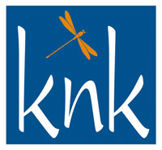A year ago I wrote an article for InPublishing about Twitter, imploring journalists to adopt it. It should be every journalist’s newswire, I argued.
Since then, most journalists have got the message, not because of what I wrote (although hopefully I influenced one or two) but simply because Twitter has continued its unstoppable march to domination of the media landscape. For any journalist, or media business, it’s now no longer a question of if they should use Twitter; it’s how.
So, here are some thoughts on addressing the how - Twitter tactics for news organisations and news-makers.
Who are you?
It’s vital for media organisations and journalists to take care to set out their stall on Twitter, starting with account names and profiles. The “Keep It Simple, Stupid” rule applies - publishers should adopt a Twitter handle that is as close as possible to the core brand. Journalists should use their own name, or as close as they can get to it, not an obscure alias (I’m surprised that there are still some of those out there). Better still, adopt a Twitter handle that combines your name and your employer’s - a powerful dual branding. The BBC does this very effectively with its official accounts.
Similarly, the need for clarity applies to Twitter profiles. Professional credentials and expertise should be spelled out clearly. Don’t forget to include a link to your website, so users can find out much more about your organisation and access your content.
Add a profile picture which presents you in an engaging but also professional way. Forget avatars, partners, children or pets - your Twitter account is about you. Keep it that way.
Complete the set with a background picture that reflects your expertise or locality. This image is especially prominent on mobiles and tablets, increasingly the platforms of choice for social media usage - research has shown that social networking accounts for more than 50 per cent of time spent on the internet on mobile devices.
Ready, aim, fire
Don’t just launch into the Twittersphere. Before firing off, make sure you’re ready and have taken aim to ensure you link with the key news-makers, opinion-formers and influencers relevant to your journalism and audience.
If you’re already on Twitter - even if you’ve been there for some time - I recommend taking just take two or three hours to compile a comprehensive list of the people who matter in your professional world and then find and follow them.
Don’t discover them by mistake, or stumble across them over time. Seek them out at the outset. Not only will this mean you start with your Twitter “filter” set for the best results, it will also ensure you receive great content to share and comment upon.
Tweet your beat
Twitter offers the beguiling opportunity to share content and express opinions, instantly, on an unlimited range of subjects. But therein lies a trap - the pitfall of failing to play to your strengths and missing the opportunity to carve out a powerful Twitter niche.
Twitter can be a chaotic hubbub of voices - the challenge is to cut through the “noise”. Being all things to all men won’t achieve that. Success on Twitter comes from sticking to what you do best - using it as another way to leverage your specific journalistic knowledge and credibility.
So what does it mean to tweet your beat? Simply, to use Twitter and other social media channels to reinforce your journalistic authority. If you write about business, or technology, or health or education for your newspaper, magazine or website, focus your Twitter activity on that specialism.
Similarly, if your focus is on a geographical patch, take your passion for that locality on to Twitter. Become a “go to” source - or, better still, the oracle - for news, information and opinion about that place.
This approach also enables you to move, with confidence, beyond sharing news and information. Authority and expertise gives you the credibility to express opinion and provide commentary, adding real value to your tweets and enhancing your appeal to followers.
Share and share alike
Twitter has done more than any other medium to demolish the traditional monologue model of news dispensed from publisher to reader. In its place is a new news eco-system where journalists no longer have a monopoly on making and breaking the news. They’re now part of a fluid conversation between news makers and news consumers.
However, I remain surprised by how many news organisations, and even individual journalists, continue to default to a “broadcast” approach - pumping out stories without acknowledging or responding to replies or opening up to the audience in any of the many ways made possible by Twitter’s inclusive functionality.
It is vital to appreciate that Twitter is fundamentally about sharing and to embrace how it has democratised the news process. So, go with it - share and comment upon the tweets of others, acknowledge interesting posts, give credit to news breakers (even if they don’t have a press pass) and engage in the conversation. Be part of it, not apart from it.
Adopting this approach will ensure your Twitter audience is receptive and responsive when you need them. If they see you engaging meaningfully, they will return the compliment by responding when you use Twitter to share your work, probe for news stories or canvass opinion.
Twitter names and hashtags
It may seem obvious, but it’s important to use Twitter as it is meant to be used. I am surprised by how many media organisations and journalists fail to do this, or to do it consistently.
One of the wonderful things about Twitter is that anything that is posted about a Twitter user can be seen by that person, provided they are name-checked with use of their Twitter account name. Tweet something positive about a Twitter user using their “handle” and you are almost guaranteed a retweet, increasing the audience for your post and further exposure for your Twitter persona.
The humble hashtag is hugely powerful on Twitter. Use it to tag the key words in your tweets to ensure they come up in search returns. Also make sure that, if you are posting about an event, running story, issue or campaign, your tweets carry the hashtag that automatically brings together and archives all the Twitter conversation it prompts.
Another tip for local journalists - whenever possible, use a location hashtag. Increasingly, users are filtering their Twitter timeline by where they live, using great apps like Tweetdeck and HootSuite, to do this. By using #Hull frequently, my tweets are prominent in these timelines, ensuring increased audience, enhanced “brand” recognition and greater engagement with my content.
Make it visual
The age-old maxim about the power of a photograph to tell a story certainly applies to Twitter - a picture can say more than 140 characters!
None other than Barack Obama proved this with the most shared piece of social media ever. This tweet consisted of a single picture - of him hugging wife Michelle - and just three words “Four more years”. It has been retweeted more than 800,000 times and “favourited” by over 300,000 Twitter users.
And that’s just an exaggerated example of what happens all the time. Indeed, research by Twitter shows tweets that include a photo or video gain three to four times as much engagement, including retweets and replies, than those without a visual element.
Life is local (even on Twitter)
Twitter may be a global platform, but it’s also a tremendous source of local news stories, witness accounts and opinions.
If local journalists follow the right accounts, they will find stories popping into their timeline every day, sometimes from the most unlikely sources.
But Twitter also has a little known advanced search function (find it in the top right-hand corner of the search page) that enables journalists to unearth specific local information. Use it to search by a combination of hashtag, word or phrase. Looking for witnesses to a local news event or opinions on a controversy on your patch? Go to Twitter - the sources are there.
There’s another really useful local function in Twitter. Most people are aware of “trending” - when issues create a buzz and are ranked as among the most talked-about on the social network. Until recently, Twitter only showed what was trending worldwide or by country, but now users can change their setting to any one of 26 large towns and cities, with more, no doubt, to come.
I’ve changed my trends setting to Hull and can now see what’s interesting people where I live. Much of it mirrors the UK trends - celebrities, TV shows, sport etc - but it also highlights what’s buzzing close to home. It flags up the subjects that are hitting the spot with local Twitter users and identifies the hashtags to use to ensure that your posts are returned when curious users delve into trending subjects. It makes it easy for local media organisations to become part of the buzz.
Get the balance right
Probably more than any other issue around social media and journalism, I hear debate about whether journalists should post on Twitter in a personal capacity. My answer: Of course they should, but there is a big but.
Yes, there is no problem with posting occasionally about your interests and passions, or even the odd aside about X Factor, but, remember, those tweets are almost certainly not why your followers follow you. They are much more interested in you as a news-maker and news opinion former.
So, in my view, any journalist who wishes to develop a substantial, engaged audience outside of the “news village” should focus on sharing their journalism and their journalistic expertise. As a guide, consider the 80-20 rule, with the vast majority of your tweets posted in a professional capacity.
Some wise words
Finally, what about a social media policy to safeguard brand reputation? I believe it is important to put in place some over-arching structures and disciplines to ensure purposeful engagement with social media, but I’m not a believer in placing journalists in a straightjacket.
So what should be the advice to users? Try this:
“Remember not only to say the right thing in the right place, but, far more difficult still, to leave unsaid the wrong thing at the tempting moment.”
Certainly a succinct summary of the need for caution. Surprising, then, that this “social media policy” dates back almost 300 years. The author? Benjamin Franklin, American newspaper publisher, printer and politician (and the face on 100 dollar bills).
A perfect illustration that, while so much changes, in the world of publishing, some things stay the same.












